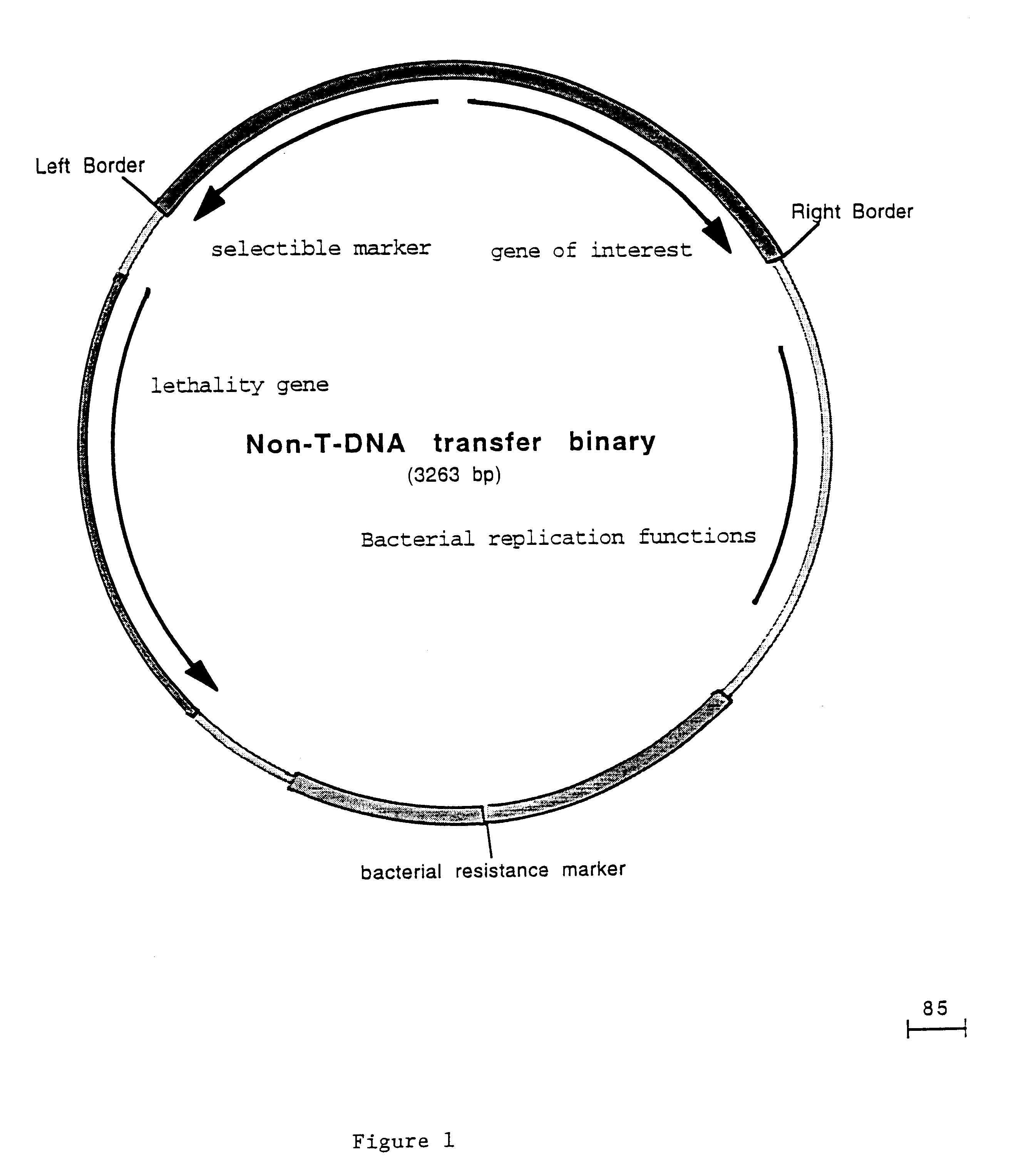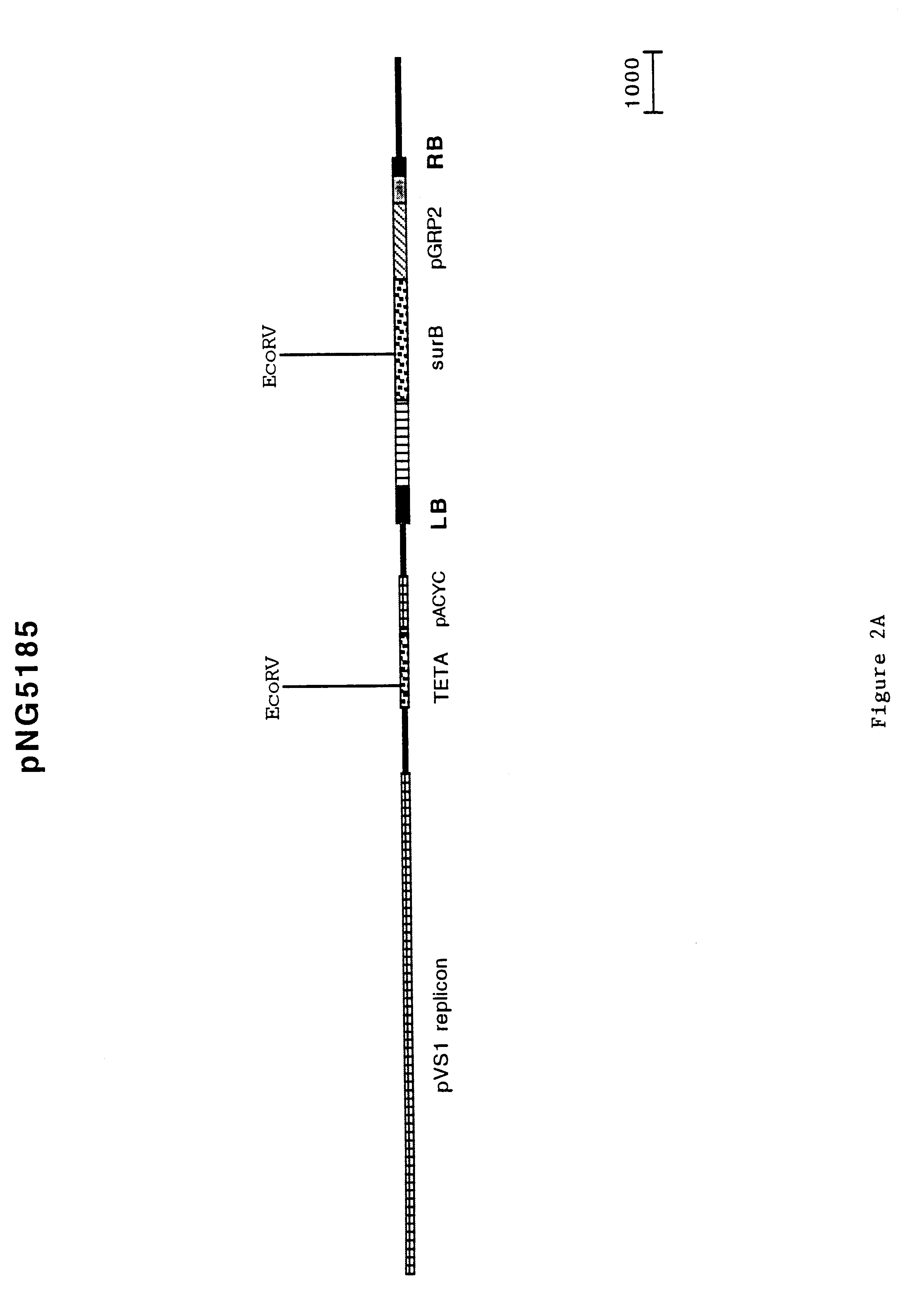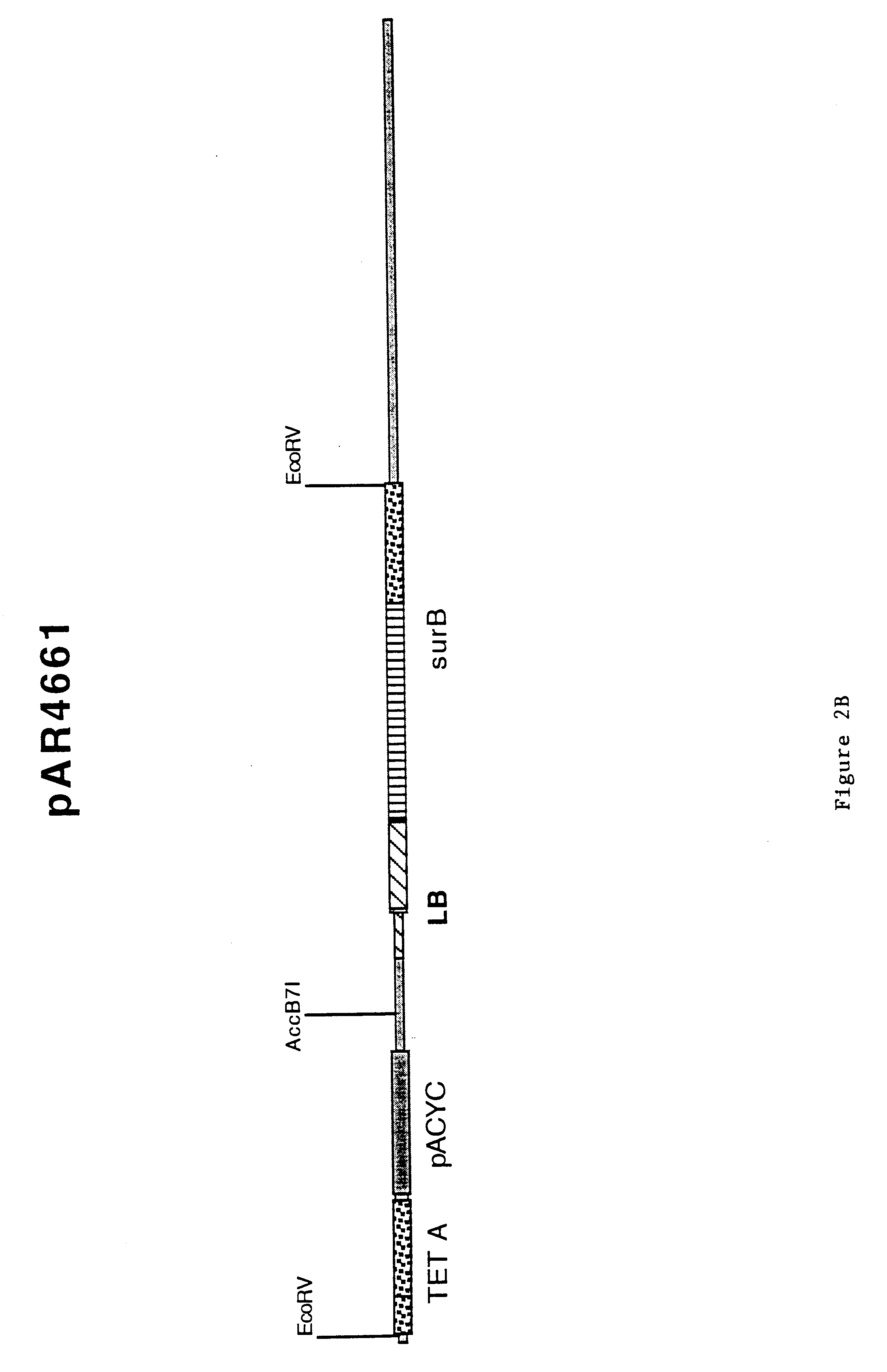Compositions and methods for improved plant transformation
a technology of plant transformation and composition, applied in the field of agrobacteriummediated dna delivery, can solve the problems of lack of simple and cost effective methods for producing a population of transgenic plants, and the number of transgenic individuals with non-t-dna sequences is reduced substantially
- Summary
- Abstract
- Description
- Claims
- Application Information
AI Technical Summary
Problems solved by technology
Method used
Image
Examples
example 1
This example describes the construction of 1) the binary vector containing barnase-INT and LUC-INT outside the left border, and 2) a control vector with a non-functional barnase-INT gene.
In order to test the efficacy of a lethal screen to prevent transfer of sequences past the left border, an existing binary vector was modified by placing a lethal gene and / or a visible marker gene outside of the T-DNA, just beyond the left border. In order to simplify the modification of the large(20 Kbp) binary vector pNG5185, the fragment to be modified was subcloned. This was accomplished by digesting pNG5185 with EcoRV, gel purifying the 5.4 Kbp fragment and ligating it into the EcoRV site of pGEM5Z (Promega) resulting in pAR4661. This EcoRV fragment contains a portion of the surB gene which is within the T-DNA borders, the left border sequence, the pACYC origin of replication and a portion of the TETA gene.
The luciferase gene was chosen as a visible marker gene and the barnase gene as a lethal ...
example 2
This example describes Agrobacterium-mediated transformation of tobacco using a lethal gene outside the left border.
The source of the explants was in vitro grown tobacco plants (cv Petite Havana) cultured on TCMA medium (1 / 2 MS salts, B5 vitamins, 100 mg / l m-inositol, 600 mg / l MES, 20 g / l sucrose, pH 5.6 and solidified with 7 g / l TC agar) at 27.quadrature.C in 16 hr light. After removing the midrib, leaves were cut into explants ca. 2.times.2 mm. Explants were floated on minAsuc medium containing an overnight culture of LBA4404 cells diluted to 5.times.107 cells / ml and containing one of the binaries; pNG5185, pBH700 or pBH710. After several minutes explants were transferred to plates containing TCMA basal medium supplemented with the following; 0.5 mg / l BAP, 2 mg / lIAA and 100 .mu.M acetosyringone. Explants were cocultivated on this medium, overlayed with filter paper discs, at 24.degree. C. / dark for two days. Explants were then transferred to TCMA basal medium supplemented with the ...
example 3
This example describes tobacco transformation results demonstrating that barnase function is directly responsible for the reduction in DNA outside the T-DNA being present in transformned plants.
Transformations described in this example were performed essentially as described in example 2, with the following exceptions: The concentration of the bacterial inoculum was 2.5.times.107 cells / ml, explants were cocultivated for 4 days and in addition to wild type tobacco (WT) a barstar expressing line was also included (basrstar5). The barstar gene encodes a small polypeptide which inactivates the barnase enzyme by binding at an allosteric site. This binding can result in protection of a cell from the otherwise lethal effects of the barnase enzyme if an excess of barstar over barnase is produced. Barstar5 was included in the experiment to determine whether this line would provide sufficient protection to allow transfer of the barnase gene without lethality. This would result in a higher inc...
PUM
| Property | Measurement | Unit |
|---|---|---|
| pH | aaaaa | aaaaa |
| pH | aaaaa | aaaaa |
| frequency | aaaaa | aaaaa |
Abstract
Description
Claims
Application Information
 Login to View More
Login to View More - R&D
- Intellectual Property
- Life Sciences
- Materials
- Tech Scout
- Unparalleled Data Quality
- Higher Quality Content
- 60% Fewer Hallucinations
Browse by: Latest US Patents, China's latest patents, Technical Efficacy Thesaurus, Application Domain, Technology Topic, Popular Technical Reports.
© 2025 PatSnap. All rights reserved.Legal|Privacy policy|Modern Slavery Act Transparency Statement|Sitemap|About US| Contact US: help@patsnap.com



